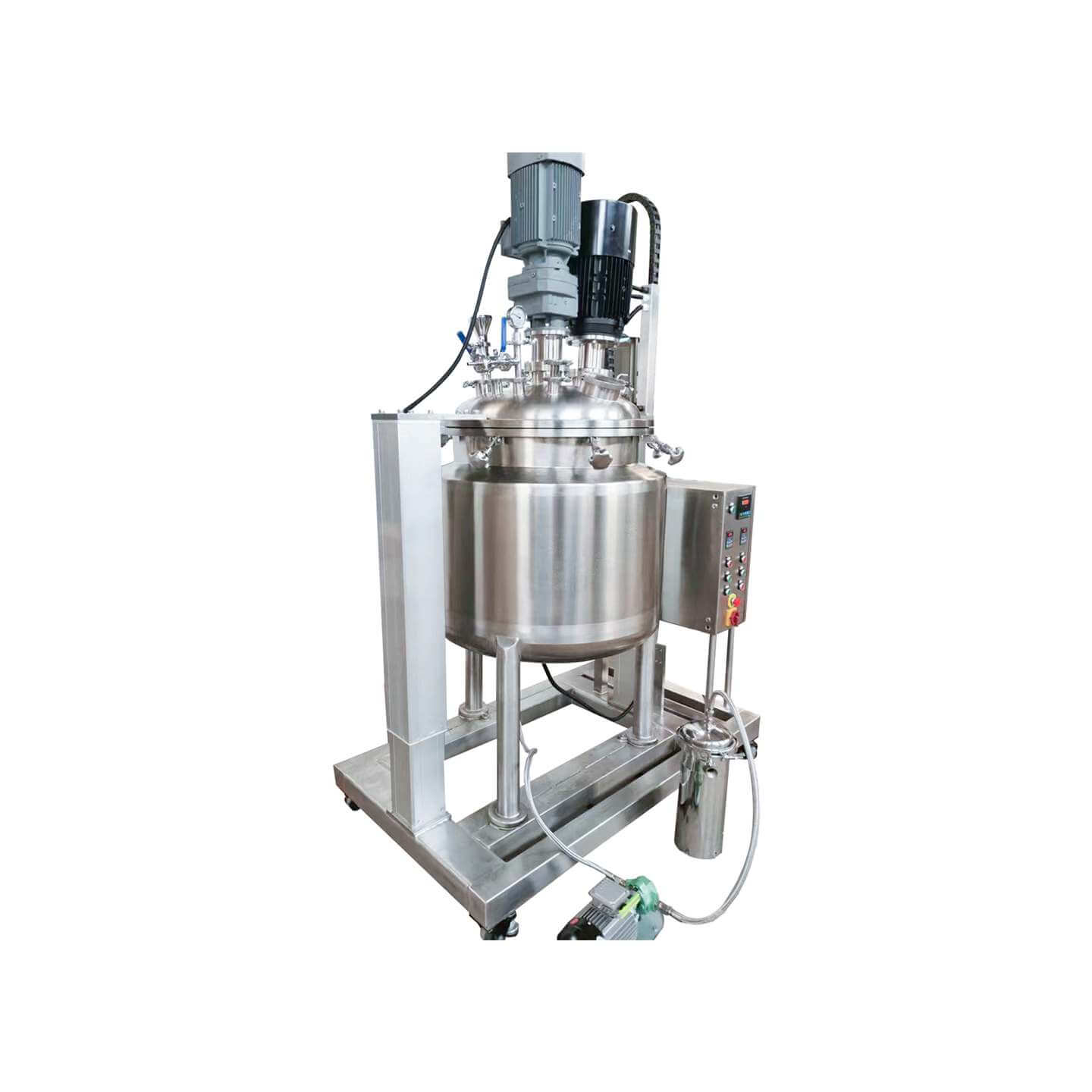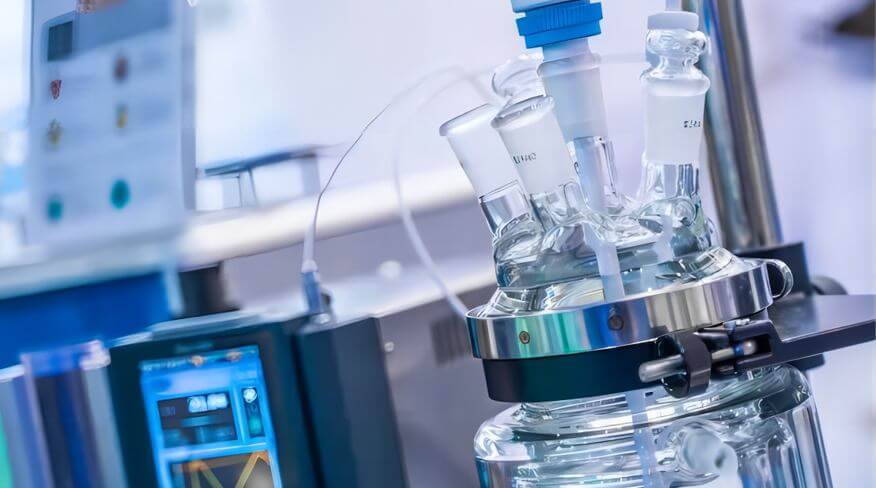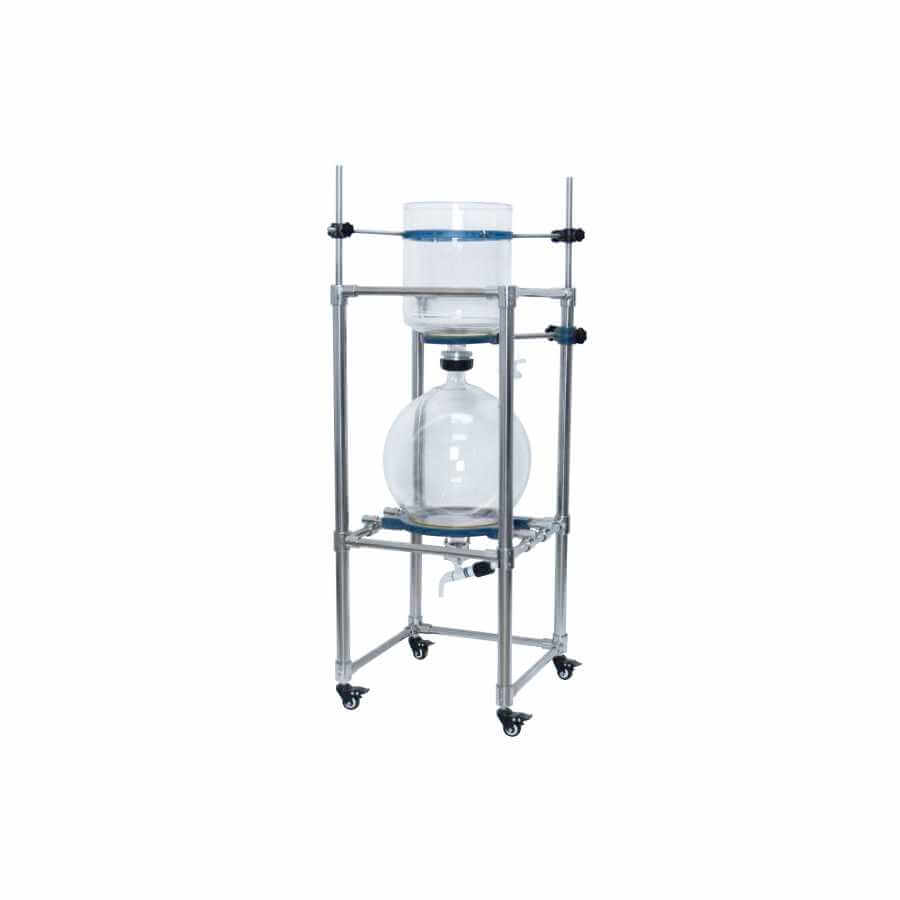

Laboratory Reactor
Laboratory reactor: used in the chemical industry, pesticide, paint, and other fields
Material
glass, stainless steel (316, 304), carbon steel, others
Capacity (L)
10-10000+
Mixing system
anchor, paddle, frame and others
Heating system
electric heating, oil heating and others
The laboratory reactor is small in size, beautiful in appearance, light, and fast in installation. It is composed of a pot body, pot cover, stirrer, jacket, support and transmission device, shaft sealing device, etc. The type of stirring device, rotation speed, sealing structure, heating method, etc. are produced.
Request a quoteGlass lab reactors can not only be used for the research of various chemical reactions such as organic synthesis, catalytic reactions, polymerization reactions, etc. It can also be used in experimental work such as cell culture, bacterial culture, and drug synthesis in the fields of biology and pharmaceuticals. Glass lab reactors feature rapid and even heating and cooling, which can improve the efficiency and accuracy of experiments. Through glass lab reactors, scientists can control and observe the reaction process, study reaction mechanisms, and optimize reaction conditions, thereby promoting the progress of scientific research.

Advantages of glass lab reactor
1. Good chemical inertness: The glass lab reactor is made of high borosilicate glass or other chemically inert glass materials. It has excellent corrosion resistance and can adapt to a variety of reaction substances and reaction conditions. Suitable for a wide range of reaction types, such as acid-base neutralization, redox, synthesis, etc;
2. High flexibility: Glass lab reactors usually have specifications of different capacities and shapes to choose from. At the same time, it can also be equipped with different types of stirrers, heating and cooling equipment, sampling ports, feed ports, and other accessories to meet the reaction needs under different experimental conditions;
3. Good visibility: Glass lab reactors have good visibility and are usually transparent or translucent in nature. The reaction process can be clearly observed, which facilitates researchers to conduct real-time monitoring and adjustment, and also facilitates observation of the morphology and color changes of the reaction products;
4. High work efficiency: The glass lab reactor is easy to operate, easy to clean and maintain, and can improve laboratory work efficiency;
5. Relatively low cost: Compared with large-scale production of industrial reaction vessels, glass lab reactors usually have lower costs, are suitable for small-scale experiments and scientific research, and can meet experimental needs within a limited budget.

Disadvantages of glass lab reactors
1. Not suitable for high temperature and high pressure reactions: Glass lab reactors are usually not suitable for high temperature and high pressure reactions. Because glass materials have limited temperature and pressure resistance, they are prone to safety risks such as breakage and leakage;
2. Limited to small-scale experiments: Glass lab reactors generally have a small capacity and are usually used for small-scale experiments and research and are not suitable for large-scale production. If large-scale production or reactions with larger throughputs are required, other types of reaction vessels need to be considered;
3. Not suitable for some special reactions: Some special reactions, such as high-pressure hydrogenation reactions, high-temperature hydrogenation reactions, etc., may not be suitable for carrying out glass lab reactors. Because these reactions may require higher temperature and pressure conditions, and glass lab reactors have limited temperature and pressure resistance;
4. Not suitable for some special media: Some special media, such as strong acids, strong alkalis, organic solvents, etc., may be corrosive to the glass material of the glass lab reactor. It may cause damage to the glass lab reactor or product contamination, so the reaction medium needs to be carefully selected and corresponding protective measures need to be taken;
5. Careful operation is required: Glass material is relatively fragile and is very susceptible to cracking due to external impact and thermal stress. Care needs to be taken to avoid collisions and sudden temperature changes to prevent damage and accidents to glass lab reactors;
6. Limited temperature and pressure control: The temperature and pressure control of glass lab reactors are relatively simple and may not be able to meet some reactions with high-precision temperature and pressure requirements. For some experiments with higher temperature and pressure requirements, other types of reaction vessels may need to be considered.
Lab glass reactor is an indispensable piece of equipment in scientific research and experimental work. Its structure, application, and advantages enable scientists to conduct experimental work more conveniently and promote the progress of scientific research. However, its strengths and weaknesses may vary under different experimental and research conditions. Experimental needs and reaction conditions should be carefully understood and evaluated before use, and appropriate safety measures should be taken to ensure the safety and effectiveness of laboratory operations.




